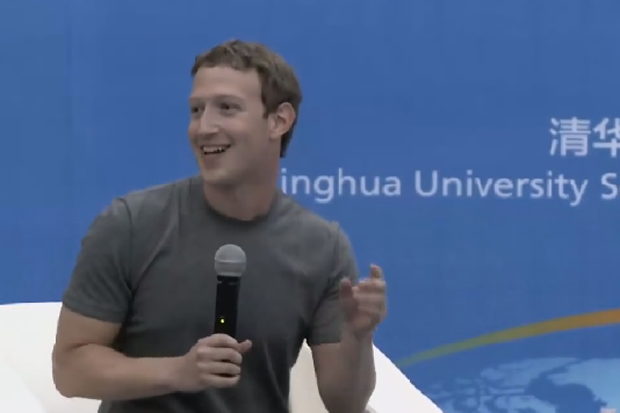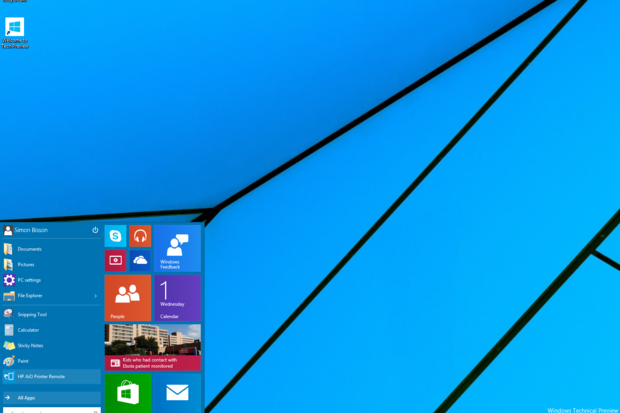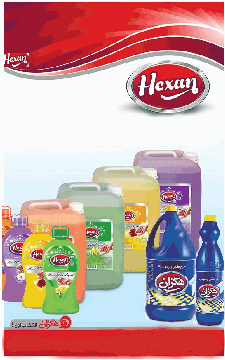جستجوگر پیشرفته سایت
شرکتaryanor.com یا آریا نور، حاصل تلفیقی از چند تجربه متفاوت در بازار تجاری ایران است و در حوزه فروش لوازم برقی. روشنایی و صنعتی به فعالیت می پردازد.
تعداد بازديد : 113

Earlier this year I wrote about the source code for some classic proprietary software which has been made available to the public. Much of that code was released by or in conjunction with the Computer History Museum, which is a great source of this sort of stuff. Recently the museum has released yet more samples of classic source code, specially a host of programs related to the historic Xerox Alto computer, as well as some early versions of Digital Research’s CP/M operating system.
Xerox Alto source code
The Alto was a personal computer developed by Xerox at the Palo Alto Research Center (PARC) in the early 1970s. It was never sold commercially, but, according to former PARC employee Paul McJones writing about it for the Computer History Museum, about 1,500 were built and made available throughout Xerox. The Alto was a revolutionary computer, one of the first to feature a graphic display (a monitor with a 606x808 black and white display), keyboard, mouse and, for the time, a beefy amount of memory (128 KB) and hard disk storage (2.5 MB). It also introduced the concept of a computer desktop and featured the first Graphical User Interface. Xerox employees using Altos could access other local computers and services (such as a printer) that were networked via Ethernet; Altos were also connect to external networks using phone lines and radio links, such as those at other Xerox offices and ARPANET.
The released code, which you can download from the Computer History Museum website, is available for non-commercial use. It includes a range of software developed for the Alto such as the OS and associated utilities, PUP (PARC Universal Packet) a protocol for internetwork communications and Bravo, the first WYSIWYG editor. They’ve also released code for the four different programming languages the Alto supported: BCPL, Mesa, Smalltalk and Lisp. Documentation for all of the code is also included.
CP/M source code
In 1974, Gary Kildall, a consultant working part-time for Intel, set about creating a program for controlling then-new floppy disk drives. It quickly evolved into a new operating system for computers based on Intel’s 8080 microprocessor, which Kildall named CP/M (originally Control Program/Monitor, later Control Program for Microcomputers). It was revolutionary in that, unlike other operating systems of the time, it wasn’t written in hardware-specific assembly code, but instead in Kildall’s own PL/M language. This means that that the OS and programs written for it could, in theory, be ported to other computer hardware, greatly expanding their potential markets. CP/M also gave birth to some soon-to-be common conventions, such as 8 character file names with 3 character extensions. Kildall eventually founded Digital Research, Inc. to license CP/M and it quickly became the dominant OS for all personal computers until DOS came along in the early 1980s.
In honor of CP/M’s 40th birthday, the source code for a very early version from 1975, and three later versions from 1976, 1978 and 1979 are being made available for non-commercial use. The code can be downloaded download via the Computer History Museum’s website. The museum also provides access to release-specific documentation.
تعداد بازديد : 38

The problem with Twitter has always been monetization: Ads don't pull in the revenue needed to maintain the social network, and it doesn't have Facebook's pull to entice developers to build on top of the platform. But no more -- or at least so Twitter hopes.
Today at its Twitter Flight event, Twitter unveiled Fabric, a software development kit for mobile apps. The move represents the company's first foray into services and something of a new start for the social network.
[ Superclass: 14 of the world’s best living programmers ]
Fabric is an extension that sits on top of existing iOS and Android development environments -- including the Android Native Development Kit and Apple's Xcode -- letting devs quickly and easily pop in features like bug and crash tracking, Twitter identity sign-in, Tweet embedding, Twitter ad plug-ins, beta app distribtuon, and Digits, a new app onboarding concept based on the user's phone number (more on that later).
"Fabric is deeply integrated with your existing workflow, so you can manage your entire toolset without ever having to leave your favorite coding environment," boasts Twitter on the official Fabric page.
.......

Facebook's CEO Mark Zuckerberg stunned many Chinese on Thursday, not with a new Facebook feature, but because he spoke and answered questions in Mandarin for almost half an hour.
Zuckerberg gave a talk in Chinese at Tsinghua University on Wednesday, and later posted a recording of the event to his Facebook page. The video quickly spread online, generating much surprise and praise from local Internet users.
"Such an awesome person is learning Chinese, why is my own English so bad," wrote one user on Chinese social networking site Sina Weibo.
Zuckerberg spoke with a strong accent, but handled the language confidently enough to impress the Chinese. Increasingly, executives from the biggest tech companies in the world are visiting the country, but rarely do they speak in Mandarin, let alone for such a long period, or field questions from the audience.
بقیه در ادامه مطلب
Apple will stop support next week for an encryption protocol found to contain a severe vulnerability, the company said on Wednesday.
Data integration is often underestimated and poorly implemented, taking time and resources. Yet it
Learn MoreSupport for SSL 3.0 will cease as of Oct. 29, it said.
"Providers using only SSL 3.0 will need to support TLS as soon as possible to ensure the Apple Push Notification service continues to perform as expected," according to a note to developers. "Providers that support both TLS and SSL 3.0 will not be affected and require no changes."
Google researchers revealed last week they found a flaw in SSL (Secure Sockets Layer) version 3.0, which was released more than 15 years ago. SSL has been replaced by TLS (Transport Layer Security), but the old versions are still used by some servers across the Internet and are supported by web browsers.
The researchers found it was possible using a man-in-the-middle attack -- nicknamed "POODLE" -- to downgrade the SSL/TLS connection to the less-secure 3.0 version, where the flaw could allow an attacker to steal a person's authentication cookies. The attacker and victim must be on the same network, posing a risk to people using public Wi-Fi.
Apple said it has already disabled SSL 3.0 on the Provider Communication interface in its developer environment, which will let developers test to make sure push notifications will still reach their applications.
Many companies have moved to stop supporting SSL 3.0 because of the flaw, one of three this year found to affect a wide variety of products across the Internet, including the "Shellshock" Bash vulnerability and "Heartbleed" in OpenSSL.
تعداد بازديد : 38

Samsung Electronics is now mass producing its most advanced 8Gbit, DDR4 memory and 32GB registered dual in-line memory modules (RDIMM).
The DDR4 memory is built on a new 20-nanometer (nm) process technology and marketed for use in enterprise servers.
"By expanding the production of our 20nm DRAM line-ups, we will provide premium, high-density DRAM products, while handling increasing demand from customers in the global premium enterprise market." Jeeho Baek, vice president of Memory Marketing at Samsung Electronics, said in a statement.

The Samsung 32GB registered dual in-line memory modules (RDIMM) are based on 8Gbit, 20nm process chips.
The new 8Gb DDR4 is the last in a line-up of 20nm-based DRAM that also includes the 20nm 4Gb DDR3 for PCs and the 20nm 6Gb LPDDR3 for mobile devices.
Using the new 8Gb DDR4 chip, Samsung began producing the 32GB module earlier this month. The new module's data transfer rate per pin reaches up to 2.4Gbps, which represents about a 29% performance increase over the previous 1.866Mbps bandwidth DDR3 server module.
Beyond the 32GB RDIMM modules, the new 8Gb chips will allow production of server modules with a maximum capacity of 128GB by applying 3D through silicon via (TSV) technology, which will encourage further expansion of the high-density DRAM market, the company said.
The new high density DDR4, also boasts improved error-correction features, which will increase memory reliability in the design of enterprise servers. In addition, the new DDR4 chip and module use 1.2 volt, which is currently the lowest possible voltage.
This story, "Samsung now producing 32GB DRAM modules, 128GB to follow" was originally published by Computerworld.
تعداد بازديد : 224

Microsoft today issued the first update for Windows 10 Technical Preview, inaugurating its fast-cadence release practice.
The update, designated as Build 9860, followed the Oct. 1 release of the preview, which Microsoft has offered businesses and technology enthusiasts to give potential customers a look at the work in progress and collect feedback during development.
Data integration is often underestimated and poorly implemented, taking time and resources. Yet it
Learn MoreThe Oct. 1 version of Windows 10 was labeled Build 9841.
"Sometimes [updates] will be more frequent and sometimes there will be longer gaps, but they will always be chock full of changes and improvements, as well as some bugs and things that are not quite done," wrote Gabe Aul, of Microsoft's Operating Systems Group on a company blog today.
Aul said that Build 9860 had been handed to his group only a week ago, and repeated earlier warnings by other Microsoft managers that the preview remains incomplete and unpolished.
Although rapid iterations are nothing new to preview or beta software, Microsoft plans to accelerate the delivery of updates -- ones that will include not only security patches and performance fixes, but also new features -- once Windows 10 officially ships in mid-2015.
Updates will ship as often as monthly for consumers, while businesses will be able to choose between that and two additional tempos that Gartner has tagged as "near-consumer speed" and "long-term servicing." The former will roll up the "consumer-speed" updates every four to six months to versions that fast-acting enterprises will test and deploy, while the latter will remain feature- and UI-static for as long as two to three years, receiving only security updates.
Other analysts have contended that Microsoft is pushing frequent updates to Windows 10 Technical Preview as much to test the process -- both the back-end Windows Update service and the Windows 10 clients' ability to absorb the changes and smoothly install the updates -- as for the company's stated reasons of gathering feedback and offering users an early look.
"Changes in Windows Update were put in place to make this possible," Wes Miller, an analyst with Directions on Microsoft, said in an interview earlier this month. "The biggest question for Microsoft is how the updating process works with the Technical Preview."
In the preview, customers have an update frequently choice of only "Fast" or "Slow."
Build 9860 will be delivered automatically to most PCs running Windows 10 within days, but users can manually initiate the process by going to "PC Settings," choosing "Update and recovery" and then "Preview builds," and finally clicking the "Check Now" button.
Aul said that the download would weigh in at between 2GB and 2.7GB, and that the reboot, the reconstruction of the OS's search index, and the syncing of OneDrive would take "longer than normal" and "some time."
Microsoft will ship a second consumer-oriented preview in early 2015, but it's virtually certain that the firm will provide more-or-less-monthly updates to the Technical Preview between now and then.
This story, "Microsoft releases first Windows 10 update, starts testing fast-paced delivery system" was originally published by Computerworld
.
تعداد بازديد : 40






